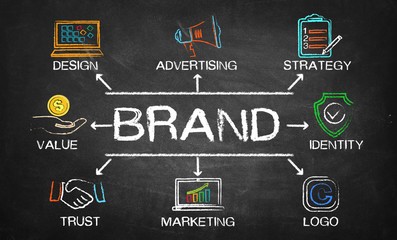
First let’s define the term “brand”:
The term brand refers to a business and marketing concept that helps people identify a particular company, product, or individual. Brands are intangible. As such, they help shape people's perceptions of companies, their products, or individuals. They provide enormous value to the company or individual, giving them a competitive edge over others in the same industry.
So, a brand is a marketing concept as are the Four P’s: the product (the good or service), the price (what the consumer pays), the place (the location where a product is marketed), and promotion (the advertising).
I think the most important component of the brand is a fifth P and that is “people”. Let me offer a tangible explanation.
Several weeks ago, I was in a Costco in New Jersey. I did all my shopping (on a Saturday, which is mayhem) and went to the check out counter. At the counter was a woman working the register and another repacking my cart.
The woman at the register noticed that I bought two containers of yogurt. Now the yogurt container is supposed to have a plastic lid and underneath the lid is a disposable aluminum foil cover. (Bear with me this gets better). Well, mine had the aluminum cover and did NOT have the plastic lid. This was noticed by the team scanning and packing my wagon. The lady at the register explained to me in a nice way what was missing and that had I purchased these containers I would have to eat all the yogurt in one sitting since there would be no lid to preserve the contents. No doubt she quietly questioned why I was let out of the house to do any shopping whatsoever. She then handed the containers to the other lady who whisked away to parts unknown. I am thinking the containers will be scrapped and I exit with no yogurt, but that is the penalty for not paying attention.
The scanning was finished, or so I thought, and we were standing there when I asked if I could check out. She replied that she would finish the order after the yogurt was replaced. I asked why it was being replaced and she explained that she could not let me buy a faulty yogurt container, I wanted yogurt, so they were getting me yogurt. I said but “yes, it is Saturday, and the dairy container is 700 miles from the register!!”. As I said that the other member of the check out team came running around the corner with two properly packaged containers of yogurt.
So, we are in a warehouse. I do not know about you, but warehouses are not aesthetically pleasing. The merchandise is presented on pallets. Yes, it is supposed to be at a lower cost, but the people will go all out to please the customers. Maybe they do not extend themselves like this every time, but this is not my first experience with a Costco employee making sure I got what I wanted or the answer I was seeking.
I just compare that to the kind of response received in other stores and others do not seem to match up. Other stores are aesthetically more pleasing; remove the merchandise from pallets to put on the shelves; carry more SKUs, but many seem to be missing a key ingredient when it comes to employee culture.
This is not an accident at Costco. I go back several years to a Costco vendor event at their headquarters. I was the CFO of a supplier to Costco at the time and key vendors were invited to the event. Jim Sinegal, the co-founder did a company overview. I remember he directly addressed the employee base and in store staffing by explaining that he was criticized by Wall St for “overpaying” employees compared to the competition. Sinegal pushed back on that criticism quite forcefully and said that he felt treating employees differently was worth the investment. It was not a cost to him, it was an “investment”. I think he was correct.
The employee culture (people) is a critical part of every business. I think back to Sinegal’s presentation, and the 700 mile walk to exchange two containers of yogurt. I see the culture play out in small companies where there is a great culture and others where the owners describe the employee group in less than glowing terms. You can guess which companies are performing better.
I am not solely suggesting that the solution is to make the “investment” in dollars that Costco was making, but there needs to be a mindset to attract the right people and treat them in a manner that projects your desired culture. Your people and culture are the cornerstone of your brand.
